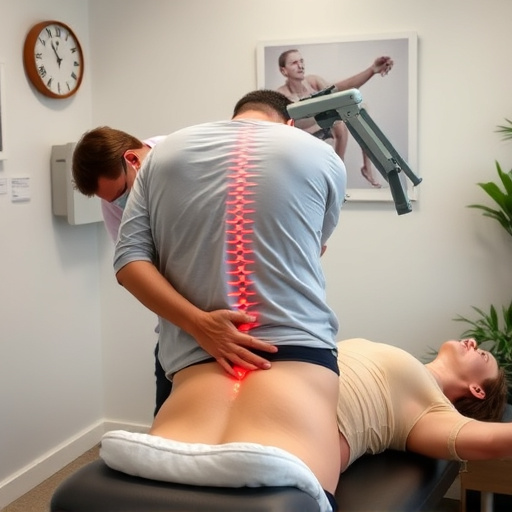Acoustic wave therapy offers a non-invasive approach to chronic neck pain, using focused ultrasound without incisions or medication. Prepare by sharing medical history, collecting documents, wearing comfortable attire, and being aware of potential side effects. Post-treatment care includes hydration, cold compresses, and gentle exercises, with healthcare guidance for optimal results.
“Preparing for your first acoustic wave therapy appointment? This guide will ensure a smooth experience. Firstly, understand the basics of acoustic wave therapy – its benefits and what to expect during treatment. Bring all required documents and wear loose, comfortable clothing. Additionally, be aware of potential side effects and post-treatment care instructions to best manage your recovery. With these steps, you’ll be well-prepared for a successful acoustic wave therapy session.”
- Understand Acoustic Wave Therapy Before Your Appointment
- Gather Necessary Documents and Wear Comfortable Clothing
- Prepare for Potential Side Effects and Post-Treatment Care
Understand Acoustic Wave Therapy Before Your Appointment

Before scheduling your acoustic wave therapy appointment, take some time to understand what this innovative treatment entails. Acoustic wave therapy is a non-invasive procedure that uses sound waves to promote healing and alleviate pain in various parts of the body, including the neck. Unlike traditional chiropractic treatments or even sports injury treatments, it offers a unique approach by utilizing high-intensity focused ultrasound to target specific tissues without any incisions or medication.
By knowing how acoustic wave therapy works, you can better appreciate its benefits. This treatment is particularly effective for managing chronic neck pain, offering an alternative solution when other methods have proven unsuccessful. It’s crucial to discuss your medical history and expectations with the therapist before starting the sessions to ensure a personalized and safe experience tailored to your specific needs.
Gather Necessary Documents and Wear Comfortable Clothing

Before your acoustic wave therapy appointment, it’s essential to be prepared with all the necessary documents and attire. Gather any relevant medical records, insurance information, and previous test results related to your treatment. These will help the healthcare professionals understand your health history and design a personalized treatment plan for you.
Wear comfortable clothing that allows easy access to the areas being treated. Loose-fitting garments or athletic wear are ideal choices as they provide flexibility and ease of movement. Remember, acoustic wave therapy focuses on the body’s natural healing process, so ensuring comfort will enhance your overall experience and potentially improve results.
Prepare for Potential Side Effects and Post-Treatment Care

Before undergoing acoustic wave therapy, it’s crucial to understand that while generally considered safe, like any treatment, it may come with temporary side effects. These can include mild discomfort, redness, or swelling at the treatment site. Some individuals might experience headaches or muscle soreness after the procedure, but these typically subside within a few days. It’s important to be aware of these potential outcomes so you’re prepared and not alarmed if they occur.
After your acoustic wave therapy session, proper post-treatment care is essential for optimal results. This includes staying hydrated, applying cold compresses to reduce inflammation, and gently exercising the treated area as tolerated. Your healthcare provider may offer specific instructions tailored to your needs, focusing on mobility improvement and headache relief. Remember, following their guidance will help ensure the best possible outcome from your shockwave therapy for pain.
Acoustic wave therapy offers a non-invasive approach to various health concerns, and preparing adequately can enhance your experience. Before your appointment, familiarize yourself with the treatment, ensuring you understand its benefits and potential outcomes. Bring all required documents to streamline the process, and opt for comfortable clothing that won’t restrict movement. While acoustic wave therapy is generally well-tolerated, be aware of possible side effects and prepare for post-treatment care as recommended by your specialist. This proactive approach will help ensure a successful and satisfying experience with acoustic wave therapy.














